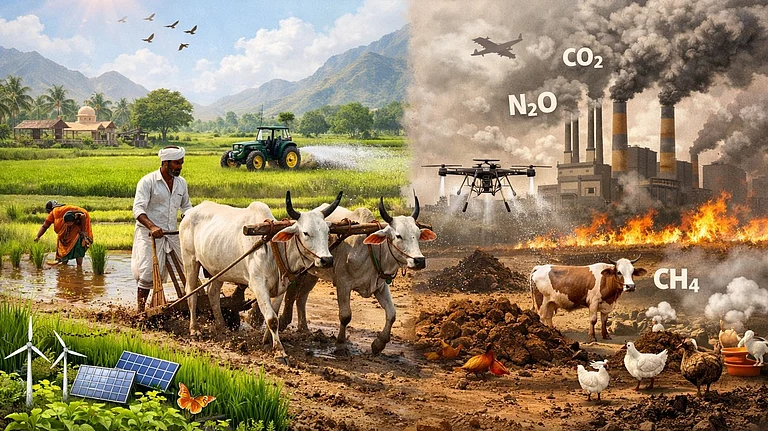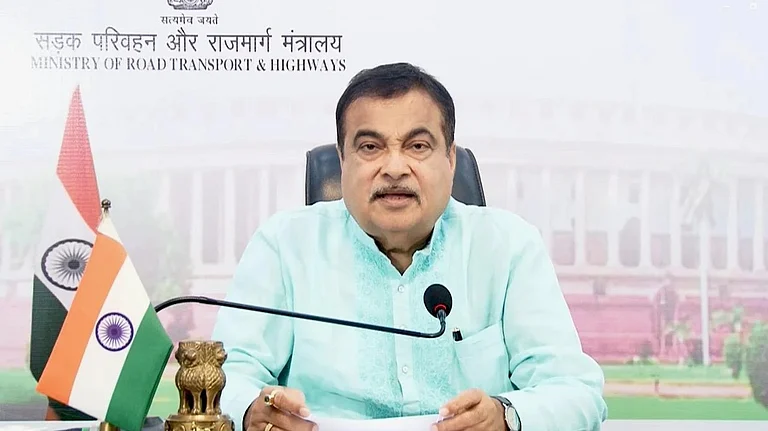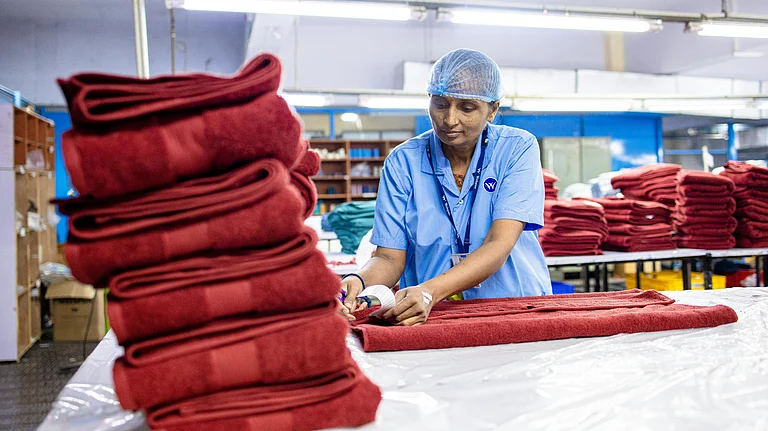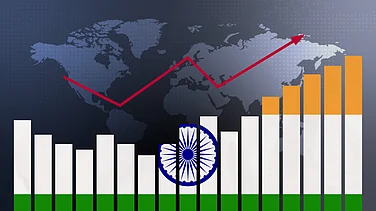The Union Budget 2025-26 announced development of Grameen Credit Score (GCS) to extend loans and facilitate credit needs in the rural areas, including those of the Self-Help Groups (SHGs). Traditionally, the Credit Information Companies (ClCs) used a generic credit scoring mechanism without any specific consideration for the rural economy.
Income streams back the loan takers' financial credentials and play a decisive role in determining the default rate/delinquency. However, income sources especially in the agriculture sector are subject to economic and extra-economic shocks where crop yield is highly weather-dependent, marketing channels are largely informal due to presence of middlemen, price signals are erratic, asymmetric, etc.
Despite urgent credit needs, no formal viability-based lending process is in place, making government intervention essential. Mandatory PSL (priority sector lending) led to sharp rise in lending, but at the cost of steep increase in NPAs, which are undesirable for any profit-making entity. In 2019, the total disbursement to the agri-sector was Rs 8,86,791 crore, which has risen to Rs 18,27,666 crore in 2024. According to the RBI, credit to agriculture and allied activities grew 11.4%, down from 20% during the corresponding fortnight last year.
Moreover, agricultural credit growth through co-operative banks remained stagnant between 2022 and 2024. As per the NABARD Survey in March 2025, almost 31% of farmers borrow from informal or non-institutional sources. The continued reliance on informal credit mechanisms significantly exacerbates farmers' debt distress, given the typically high interest rates and absence of regulatory safeguards associated with such lending practices.

Given this cost, policy guidelines are evolving on improving financial soundness and credit discipline towards responsible lending using technology wherever possible, even under PSL. This one-size-fits-all informal set-up of extending formal credit backed by financial repression, triggered continuous dependency of this sector for formal credit, fuelling economic concerns - adverse selection (market inefficiency) and moral hazard (putting less effort when others bear the risk) tendencies.
Not all asset owners in the farming community are in high-risk category, the loan takers can be categorised based on their revenue sources linked to yield exposures, cropping pattern - frequency and variety, etc. Increasing farm mechanization, evolution of fintech, blockchain and precision farming techniques applied by agri-tech start-ups necessitates precise categorization of agri-assets while extending farm loans, which will be a win-win for both the FIs and the loan takers.
Also, by leveraging alternative data, such as mobile usage patterns, social media activity and transaction histories, different banks and fintech startups globally are developing credit scoring models.
One such remarkable initiative would be rural asset (mostly land) classification, and eventually credit scoring of rural economic entities, as envisaged in the Union Budget. Considering that earnings in the sector are subject to seasonality, wider risk exposures, weather dependencies, soil quality, irrigation facility disruptions, marketing risks, complementary non-farm earning sources, precise yield measurement and data analysis backed precision farming will help mitigate the above-mentioned concerns. Credit scoring is an iterative, continuous, and systematic quantification technique of creditworthiness where asset-to-debt ratio, income streams, etc., relevant information is always validated for borrowers.
In case of agriculture in a country like India, where small landholders grapple with weather shocks and economies of scale issues, precise information on field-level on-time performance is neither available nor systematically captured, let alone historical data. If lenders receive a standardised metric to evaluate an agricultural portfolio across clientele, they can monitor the risks and set the credit scores. Since farmers typically do not have financial portfolio, diverse income streams and risk-mitigating array of options like other business ventures, they require favorable interest rates to shield operational risks.
With technology evolving bigdata and ML algorithms can identify the informal lending patterns and the payment history, digital footprint-based real-time scores in the farming community. This needs to be done through extensive longitudinal survey across different agri-regions considering the region-specific weather-induced yield shocks.
To enable financial inclusion in the largest labour-absorbing sector (agriculture) it is ripe time that the ‘quality’ rather than ‘quantity’ targets needs emphasis in the fintech era. In other developing countries with similar agricultural set up, many innovative approaches are observed: the CGAP recently started working with PRIDE-Uganda’s largest MFI to develop new credit scoring system for farmers. CGAP surveyed thousands of smallholders in six countries — Bangladesh, Côte d’Ivoire, Mozambique, Nigeria, Tanzania, and Uganda. Ideal credit scoring needs scalable data, multiple thousands to start with, for precision.
There are many examples from Myanmar and Indonesia (T-CASH loans that use mobile credit scoring). If we survey only 10,000 farmers and default rate is 5% then we have only 500 defaulters to draw any inference for policy decisions. Therefore, government-backed extensive agri-survey in all states will help scale up the benefits.
Challenges for fintech driving GCS in PPP mode could be low digital literacy of farmers, lack of digitalization, trust issue etc. Here, social capital, behavioral and emotional factors will play crucial role. Farmer Producer Organizations (FPOs) can form basis of social capital, which will reduce transaction costs to gather large pool of credible farmers’ information and form the basis of alternate credit scoring mechanism. At present, this network effect, peer vouching via SHGs can be helpful due to very low penetration of farmers’ credit in India: 40% use formal credit, half of the credit goes to large armers, even though 45% possess Kisan Credit Card.
Thus, precise credit scoring should involve large number of financial and behavioral parameters. Here, emerging Agri-tech companies can play big roles in connecting farmers with the policy network and financial institutions, market and build a trust network, and help bridge efficiency-weighted credit need gaps.
Grameen credit scoring will involve precise and intensive efforts to measure agri-yield with proper GPS coordinates for better micro-level intervention. This needs precise information on non-farm income flows as well, which nudges farmers’ behavioural instincts to make farming decisions for soil testing, fertilization, harvesting, breeding, rotation, etc. Third-party verification is also needed, complemented with satellite imagery data for precision.
[Authors are faculty of Economics - IMI Kolkata and faculty of Finance - IMI Kolkata, respectively]



























